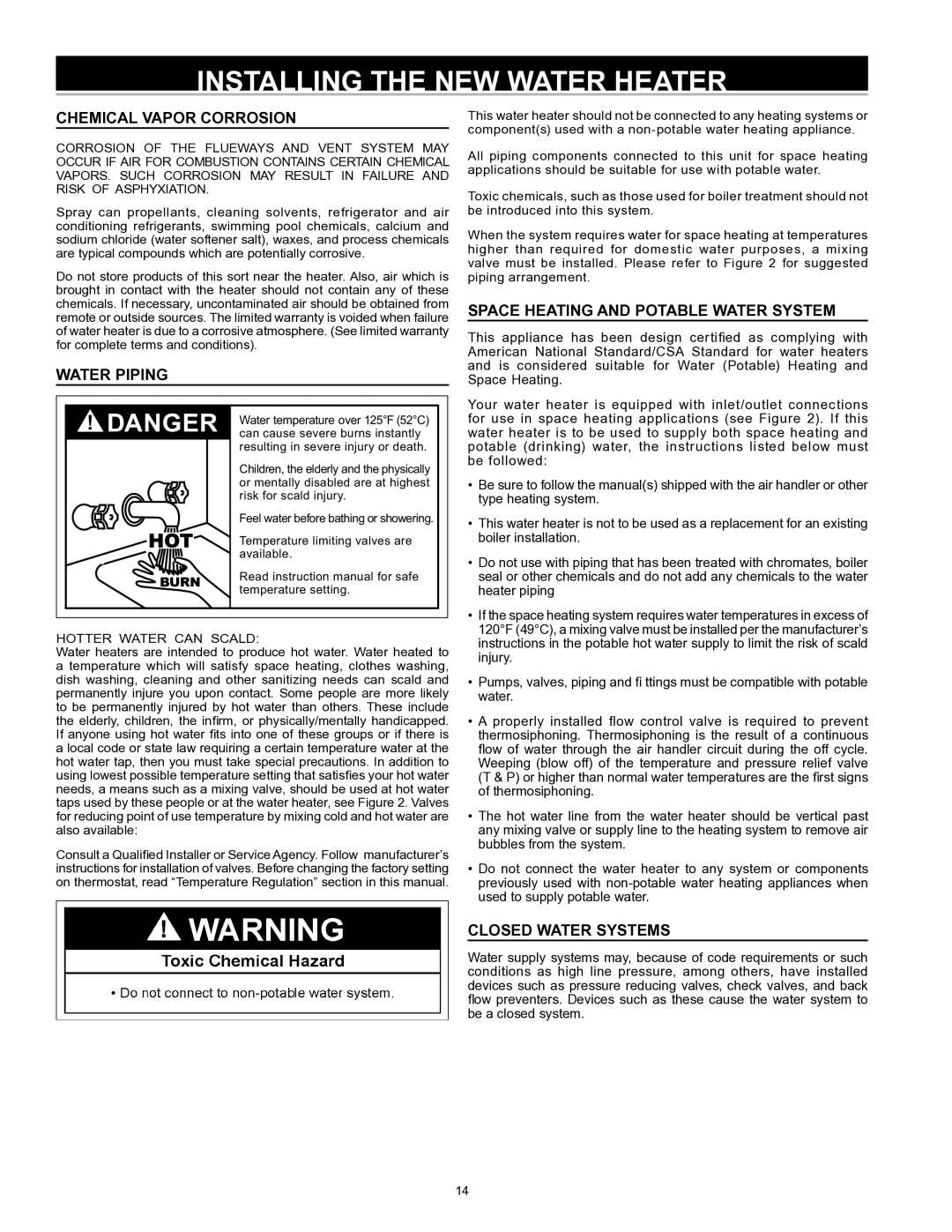197425-004 specifications
State Industries Model 197425-004 is a noteworthy water heater designed to cater to the needs of both residential and commercial applications. Known for its efficiency and reliability, this model offers a range of features that enhance its appeal to users looking for an effective water heating solution.One of the primary characteristics of the 197425-004 is its tankless design, which allows for an endless supply of hot water. Unlike traditional water heaters that store hot water in a tank, this model heats water on demand, conserving both energy and space. This is particularly advantageous for households or businesses with fluctuating hot water needs, as it eliminates the risk of running out of hot water during peak usage times.
The technology behind the State Industries 197425-004 incorporates advanced insulation and heat exchange systems, which significantly improve energy efficiency. With a high energy factor rating, this unit minimizes energy consumption, thus reducing utility bills and environmental impact. Users can expect lower operating costs without sacrificing performance, making it a cost-effective option in the long run.
Another defining feature of the 197425-004 is its durable construction. Built with high-quality materials, including corrosion-resistant components, this water heater is designed for longevity. The model also includes a user-friendly digital thermostat, enabling precise temperature control and easy monitoring. This ensures that users can customize their hot water needs according to individual preferences.
In addition to its performance and efficiency, the State Industries 197425-004 prioritizes safety. It is equipped with multiple safety features such as thermal overload protection and precise temperature regulation, reducing the risk of accidents.
Installation is made convenient with this model, as it is compatible with various plumbing systems and does not require complex modifications. Its compact size allows for flexible installation options, whether it is placed indoors or outdoors, depending on user preferences.
In summary, the State Industries 197425-004 represents a perfect blend of cutting-edge technology, energy efficiency, and durability. With its tankless heating system, impressive energy factor, and safety features, it continues to stand out as an excellent choice for reliable hot water solutions in diverse settings.

